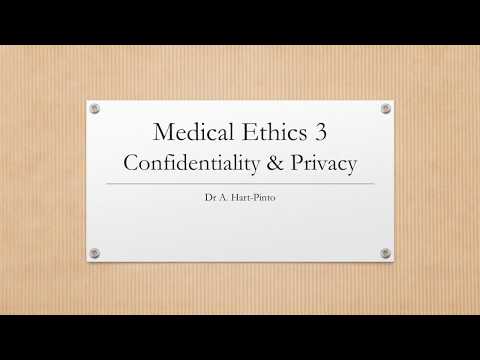Are Medical Assistants Licensed by Each State?
Contents
- Introduction:
- What is a medical assistant?
- The duties of a medical assistant
- The education and training required to become a medical assistant
- The certification and licensure process for medical assistants
- The different types of medical assistant licenses
- The states that require medical assistants to be licensed
- The benefits of being a licensed medical assistant
- The drawbacks of not being a licensed medical assistant
- Conclusion
If you’re considering a career as a medical assistant you might be wondering if you need to be licensed in each state. The answer is no – Medical assistants are not licensed by each state. However, there are certain requirements that you’ll need to meet in order to be eligible for the job. Read on to learn more about what you’ll need to do to become a medical assistant
Checkout this video:
Introduction:
As the medical field continues to grow, so does the demand for Medical Assistants According to the Bureau of Labor Statistics, employment of medical assistants is projected to grow 19 percent from 2018 to 2028, much faster than the average for all occupations.1 With this increased demand come more questions about the profession, especially regarding licensure and regulation. It’s important to understand that each state has different laws regarding medical assistants, and that those laws may change over time.
What is a medical assistant?
Medical assistants are men and women who help doctors and other health professionals in many different ways. They might take your vital signs, prepare you for an examination, give you a shot, or draw your blood. They might also handle administrative tasks such as scheduling appointments and handling insurance forms. Doctors often rely on medical assistants to keep their offices running smoothly and efficiently. Many times, medical assistants work side by side with physician assistants, who have more advanced training.
The duties of a medical assistant
Generally, the duties of a medical assistant are to perform routine administrative and clinical tasks to support the work of medical professionals such as physicians, nurse practitioners, and physician assistants. In smaller practices, medical assistants might also take on additional responsibilities such as scheduling appointments, handling correspondence, billing, and coding for insurance purposes. Medical assistants are usually trained on the job, although there are postsecondary educational programs that offer certification in medical assisting.
Medical assistants typically work in physicians’ offices, hospitals, outpatient care centers, and other healthcare facilities. They typically work full time during normal business hours; however, some medical assistants may work evenings or weekends to cover shifts in practices with extended hours. Some travel between healthcare facilities may be required.
The education and training required to become a medical assistant
Medical assistants are not licensed by each state. The education and training required to become a medical assistant vary by state, but most states require that medical assistants complete a postsecondary education program. Some states also require that medical assistants pass a state-approved examination.
The certification and licensure process for medical assistants
Medical assistants are not currently licensed by any U.S. state. However, certification is available through several professional organizations, and many employers prefer to hire certified medical assistants. Some states have laws regulating the duties that medical assistants can perform, and these laws may vary from state to state.
While licensure is not currently required for medical assistants, certification indicates that a medical assistant has completed a formal training program and has passed a standardized exam. Certification is available through several professional organizations, including the American Association of Medical Assistants (AAMA), the National Healthcare Association (NHA), and the National Center for Competency Testing (NCCT). Employers often prefer to hire certified medical assistants, and some states have laws regulating the duties that medical assistants can perform.
Medical assistants can perform a variety of administrative and clinical tasks in healthcare settings. These tasks may include taking patient history and vital signs, scheduling appointments, verifying insurance coverage, preparing patients for examination, assisting with minor office procedures, conducting laboratory tests, and providing patient education. In some states, laws regulate the specific duties that medical assistants can perform; however, individual employers may place additional restrictions on what medical assistants are allowed to do.
The different types of medical assistant licenses
There are three different types of medical assistant licenses: certified, registered, and licensed. Certified medical assistants (CMAs) are certified by the American Association of Medical Assistants (AAMA). Registered medical assistants (RMAs) are registered with the American Medical Technologists (AMT). Licensed medical assistants (LMAs) are licensed by their state’s Board of Medicine. There is no national licensing body for medical assistants, so each state has its own requirements.
Some states do not require medical assistants to be licensed at all, but most states have some kind of licensing requirement. In some states, certification from a nationally recognized organization like the AAMA or AMT is enough to satisfy the licensing requirements. Other states require both certification and passing an exam administered by the state. Still other states have their own exams that medical assistants must pass in order to be licensed.
The best way to find out about your state’s specific requirements is to contact your state’s Board of Medicine or Board of Nursing. You can also check with your local professional association for medical assistants, such as the American Society of Medical Assistants (ASMA), which has a list of state chapters on its website.
The states that require medical assistants to be licensed
There are currently twenty-three states that require medical assistants to be licensed in order to perform their duties. These states are: Alaska, Arizona, California, Colorado, Connecticut, Hawaii, Idaho, Iowa, Kentucky, Maine, Maryland, Massachusetts, Minnesota, Nevada, New Hampshire, New Mexico, North Dakota, Oregon, Rhode Island, South Dakota, Vermont and Washington.
In order to become licensed in one of these states, medical assistants must complete an accredited program and pass a state-approved exam. Some states may also require continuing education credits in order to maintain a valid license.
The benefits of being a licensed medical assistant
The medical assistant profession is regulated by each state, meaning that individuals who wish to work as medical assistants must obtain a license in the state in which they intend to practice. There are many benefits to being a licensed medical assistant, including:
-Increased job security: Licensed medical assistants are less likely to be let go from their positions than unlicensed assistants, as they are legally required to meet certain standards in order to maintain their license.
-Greater earning potential: On average, licensed medical assistants earn more than unlicensed assistants.
-Enhanced professional reputation: Licensed medical assistants are held in higher esteem by both their employers and their patients, as they have demonstrated a commitment to professional excellence.
If you are considering a career as a medical assistant, be sure to check with your state’s licensing board to ensure that you meet all of the necessary requirements.
The drawbacks of not being a licensed medical assistant
Not every state offers a licensing program for medical assistants, which might be a surprise to those considering this career. This lack of oversight by state governments could be seen as a drawback to the profession. After all, with no licensing requirements, anyone could technically call themselves a medical assistant. In states without licensing laws, the onus is on the individual to get certified through an accredited program and maintain their certification through continuing education courses.
Conclusion
Yes, medical assistants are licensed by each state. Each state has its own requirements for licensure, so it is important to check with your state’s licensing board to ensure you meet all the requirements.







